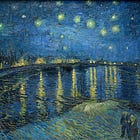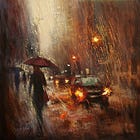Fiction
There’s no such thing as a strictly good or bad story.
A story’s just a story, after all. By nature—by definition—a story is entertaining. Its quality is judged through its humanity—by the level of empathy which it’s capable of inspiring. A “good” story is a story which weaves real connections in a real world, guiding its viewer ever-deeper into a sea of pure experience.
People are social animals. We want to be together—to experience things with one another. A story is then, quintessentially, the conveyance of an experience from one person to another.
A “good” story is a story which draws its viewers into the experiences of characters which are people—not just characters which only seem like people. Not the pale ghosts which one is liable to encounter from time to time—gaunt imitations which only take a roughly human shape. A good story is built upon characters who are people in themselves—living, breathing, and allowed to become human in their own right. To be loved and maligned; acknowledged, and afforded the opportunity to exist in the company of humankind.
A story is entertaining—or, it might be more prudent to say that if sometime you’re to happen across a story which you find quite boring… it might be wise to reconsider, and to look more closely. For it might actually be the case that—regardless of what anyone else might say…
That a boring story was never actually much of a story at all.
Here, at this moment of supreme danger for the Will, art approaches as a saving sorceress with the power to heal. Art alone can re-direct those repulsive thoughts of the terrible or absurd nature of existence into representations with which man can live; these representations are the sublime, whereby the terrible is tamed by artistic means, and the comical, whereby disgust at absurdity is discharged…
—Friedrich Nietzsche; The Birth of Tragedy







